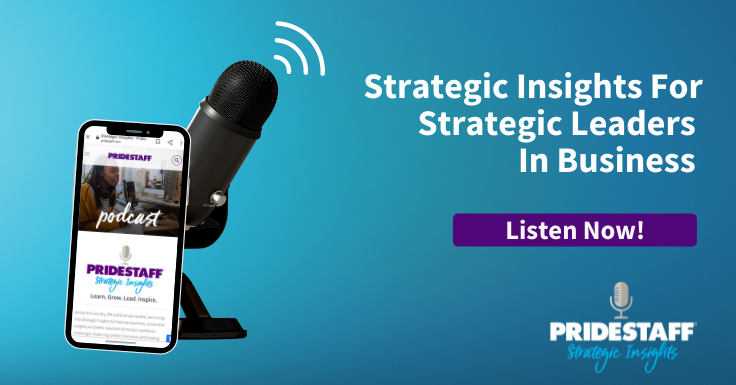The True Cost of a Bad Hire (And How to Prevent Them!)

Recruiting Advice: Here’s How You Can Avoid the Cost of a Bad Hire
Hiring the wrong people can have severe consequences for any organization. Beyond the immediate financial implications, bad hires can impact team dynamics, productivity, and overall company culture. How can bad hires negatively impact your business long term? Consider the following costs:
Decreased productivity and morale.
One of the immediate effects of a bad hire is reduced productivity within the team. When an individual lacks the necessary skills or motivation to perform their job effectively, it can result in missed deadlines, errors, and overall inefficiency. Furthermore, the negative influence of a bad hire can quickly spread, causing a decline in team morale. High-performing employees may become less engaged, further decreasing productivity.
Increased turnover and training costs.
Hiring the wrong person can lead to a higher turnover rate within your organization. When employees witness the negative impact of a bad hire, they may become dissatisfied with their work environment and seek opportunities elsewhere. This turnover can be costly, as it requires finding and training replacements. Additionally, the financial burden of rehiring, onboarding, and training new employees can be significant, diverting resources away from other important business initiatives.
Damage to company culture.
Company culture plays a vital role in attracting and retaining top talent. A bad hire who is not aligned with the company’s values and goals can disrupt the established culture. Negative attitudes, conflicts, and poor teamwork can erode the existing positive atmosphere. Moreover, a bad hire’s negative behavior or lack of professionalism can impact the company’s reputation internally and externally, making it difficult to attract high-caliber candidates in the future.
Growing customer dissatisfaction.
Employees are the face of your company and play a crucial role in shaping the customer experience. When a bad hire interacts with customers, it can result in poor service, negative experiences, and, ultimately, dissatisfied customers. Unhappy customers may take their business elsewhere, damaging your company’s reputation and potential for future growth—and its bottom line.
Hiring Tips to Prevent Bad Hires
Conversely, hiring the right people can significantly contribute to an organization’s success. Organizations that adopt more effective recruiting strategies and improve their hiring process source higher-quality candidates that add to their company culture. Here are 5 hiring tips to help you get better results:
1. Craft a Clear and Detailed Job Description
A well-crafted job description is the foundation for attracting quality candidates. Clearly outline the roles, responsibilities, and required qualifications for the position. Be specific about the essential skills, experience, and educational background necessary for success in the role. A detailed job description sets realistic expectations for applicants and ensures that only those with the desired qualifications apply.
2. Leverage Hiring Tools
In today’s competitive job market, leveraging hiring tools can significantly enhance recruitment outcomes. Applicant tracking systems, skills assessments, and pre-employment tests streamline candidate evaluations, providing objective data for hiring decisions. These tools not only save time and effort but also improve the accuracy of candidate assessments.
Analyze your recruiting strategy to ensure you are making use of all possible tools, including the following:
- Marketing tools. Your company website, job boards, job ads, employee referrals and job fairs can help you attract active job seekers.
- Staffing firms. Temporary agencies and executive recruiters can help you fill roles faster.
- Community organizations. Local colleges, trade schools, and community and religious organizations may be valuable sources for qualified candidates.
- Social networks. LinkedIn, Facebook, Twitter and other active social networks can connect you with active and passive job seekers in diverse industries.
3. Use a Consistent Screening Process
Consistency in the screening process is essential to ensure fair evaluations and minimize subjective biases.
- Develop a list of standard interview questions based on job requirements to help compare candidates objectively.
- Train interviewers to interpret non-verbal cues and avoid subjective biases. This will strengthen the screening process and lead to more accurate candidate evaluations.
- Incorporate skills assessments and pre-employment tests to evaluate candidates’ competencies accurately. These assessments can measure technical skills, problem-solving abilities, critical thinking, and other relevant competencies. By incorporating these tools, you can objectively assess candidates’ abilities and identify those who possess the necessary skills to excel in the role.
4. Create a More Strategic Interview Process
Build a consistent interview structure.
A structured interview process helps ensure consistency and fairness during candidate evaluations. Develop a list of standardized interview questions that align with the job requirements. Consider incorporating behavioral-based questions that prompt candidates to provide examples of how they handled specific situations in the past. Conduct interviews with a consistent panel of interviewers who are trained to assess candidates objectively, avoiding bias and subjectivity.
Formalize your post-interview process.
Once you conduct all your interviews, you need a sound process for selecting the best candidate. Again, standardization, training and communication are essential. Provide a form interviewers can use to summarize each candidate’s skills, experience, areas of strength, cultural fit and technical knowledge. Then, hold a post-interview review meeting to review feedback and get interviewers’ recommendations.
5. Make a Competitive Offer
To attract and retain top talent in today’s tight market, organizations must make competitive wage offers. Understanding market trends, salary benchmarks, and benefits packages are essential for crafting enticing offers. A well-designed compensation package not only helps in securing qualified candidates but also demonstrates the organization’s commitment to their employees’ growth and well-being, key decision-making factors for today’s workers.
Partner with Our Professional Staffing Agency to Prevent Bad Hires
Hiring the right talent is essential for the success and growth of any organization. However, the process can be complex and time-consuming, leading to the risk of making bad hires. Partnering with a staffing company can significantly enhance your hiring process—and reduce your risk of bad hires. Staffing agencies can provide many advantages during recruitment and hiring, including the following:
Gain access to a broad talent pool.
Staffing companies have extensive networks and resources to tap into a larger and more diverse talent pool. By partnering with them, you can access a broader range of candidates with varied skill sets and experiences. Staffing agencies often maintain databases of pre-screened and qualified candidates, allowing you to connect with individuals who have already been vetted for their suitability and competency. This expands your options and increases the likelihood of finding the right match for your specific job requirements.
Add recruiting and screening experts to your team.
Staffing agencies possess specialized expertise in recruiting and screening candidates. They have dedicated teams that understand industry trends, job market dynamics, and effective recruitment strategies. By leveraging their expertise, staffing companies can save you time and effort in the candidate selection process. They conduct thorough background checks, verify references, and assess candidates’ qualifications, ensuring that only the most qualified individuals are presented to you. This reduces the risk of making bad hires and improves the overall quality of your workforce.
Attract passive job seekers.
Staffing companies excel at reaching and attracting passive candidates who may not be actively searching for job openings. These individuals may possess in-demand skills and valuable industry experience. By partnering with a staffing company, you can tap into this pool of passive job seekers, increasing your chances of finding top-tier candidates who are not readily available through traditional job postings or recruitment methods.
Get faster fill rates and reduced time-to-hire.
Staffing agencies are equipped to handle recruitment efficiently and effectively. They have streamlined processes, access to a wide network of candidates, and the ability to expedite the hiring process. By leveraging their resources, staffing companies can help fill job vacancies faster, reducing your time-to-hire. This is particularly crucial for time-sensitive projects or urgent staffing needs. A quicker hiring process minimizes the risk of rushed decisions and enables you to secure top talent before they are scooped up by competitors.
Mitigate your legal and compliance risks.
Navigating legal and compliance requirements in the hiring process can be complex. Staffing agencies stay updated on labor laws, employment regulations, and compliance standards. By partnering with them, you gain access to their expertise and support in ensuring that your hiring practices align with legal requirements. This reduces the risk of non-compliance and potential legal issues associated with the incorrect classification of employees, inappropriate interview questions, or unfair hiring practices. Staffing companies can guide you through these challenges, providing peace of mind and safeguarding your business from legal repercussions.
PrideStaff Will Help You Hire the Right People for Your Open Jobs
PrideStaff can help you take the guesswork out of hiring. Our On Target fulfillment process was designed to eliminate chance and inconsistency, helping you to find better quality candidates each and every time.
Whether your needs are temporary or direct, entry-level or management, On Target can help you increase productivity, decrease training costs, reduce staffing headaches and generally ease your hiring process. Contact your local PrideStaff office today to learn more.




